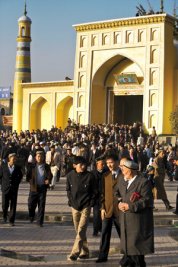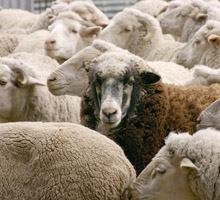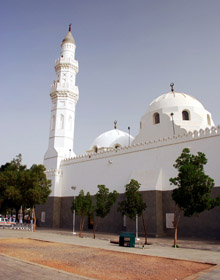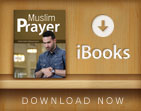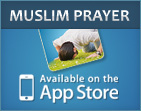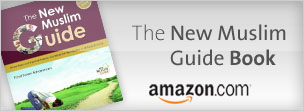The Festival of Sacrifice (‛Eed-ul-Adhaa)
The Festival of Sacrifice (‛Eed-ul-Adhaa), which is celebrated on the tenth day of the lunar month of Dhul-Hijjah, the twelfth month of the Islamic calendar, has numerous merits including the following:
- It is one of the best days of the year, being amongst the first ten days of the lunar month of Dhul-Hijjah, as the Prophet ﷺ said, “There are no days in which good deeds are dearer to Allah than these ten days [of Dhul-Hijjah].” His companions enquired, “Not even jihaad in the way of Allah?” He replied, “Not even jihaad in the way of Allah, except for someone who goes out for jihaad, sacrificing both his life and property, and returns with neither of them.” (Saheeh Al-Bukhaaree: 926; Sunan At-Tirmidhee: 757)
- It is “the day of the greater pilgrimage” on which the greatest hajj rites are carried out, the foremost and most exalted of which are walking round the Ka‛bah (tawaaf), slaughtering sacrificial animals and throwing pebbles at the largest pillar in Mina, known as Jamrat-ul-‛Aqabah.
What Should Be Done On ‛Eed Day?
On this day, a Muslim who is not performing hajj engages in the same activities he normally does on the Festival of Fast Breaking (‛Eed-ul-Fitr), with the exception of paying Zakaat-ul-Fitr, which applies only to ‛Eed-ul-Fitr.
A distinctive feature of ‛Eed-ul-Adhaa is the slaughtering of a sacrificial animal, which is considered to be a highly recommended act of worship.
Ud-hiyah, or sacrificial animal, refers to any of the pastoral animals (sheep, cows or camels) that are slaughtered during the Festival of Sacrifice (‛Eed-ul-Adhaa) with the intention of seeking closeness to Allah. The time for offering a sacrifice begins after the ‛Eed-ul-Adhaa prayer and lasts until the sunset of the 13th day of Dhul-Hijjah. As the Qur’an states, “Pray to your Lord and sacrifice to Him alone.” (Soorat Al-Kawthar, 108:2) Prayer mentioned here has been interpreted to mean the ‛Eed-ul-Adhaa prayer and sacrifice has been interpreted to refer to ud-hiyah, or the sacrificial animal.
Islamic ruling regarding ud-hiyah:
Slaughtering a sacrificial animal during the Festival of Sacrifice (‛Eed-ul-Adhaa) is a practice which the Prophet ﷺ regularly did and encouraged (sunnah mu’akkadah) for those who can afford to do so. The head of the household may offer a sacrifice for himself and on behalf of his dependents.
A Muslim who intends to offer a sacrifice must refrain from cutting his hair, clipping his nails or picking his skin from the first day of Dhul-Hijjah until he slaughters the sacrificial animal on the 10th of Dhul-Hijjah.
The Conditions that the Sacrificial Animal Must Satisfy
- It is not lawful to offer a sacrifice of any animal or bird except pastoral animals, namely sheep, cows or camels.
One sheep or goat would suffice for a man and his household, and seven different households may share a cow or a camel. - The sacrificial animal must be of the right age. A sheep must be at least six months, a goat one year old, a cow two years old, and a camel five years old.
- It should be free from apparent defects, because the Prophet ﷺ said, “There are four [types of animals] that will not do for sacrifice: a one-eyed or blind animal whose defect is obvious, a sick animal whose sickness is obvious, a lame animal whose lameness is obvious and an emaciated animal that has no marrow in its bones.” (Sunan An-Nasaa’ee: 4371; Sunan At-Tirmidhee, 1497).
What Should Be Done with the Sacrificial Animal?
- It is forbidden to sell any part of the sacrificial animal.
- It is recommended to divide it into three parts: one part for eating, one third to be given as gifts and one third to be given in charity to the poor and the needy.
- It is permissible to authorise someone to slaughter a sacrificial animal on one’s behalf, such as trustworthy charitable societies that undertake the slaughter of sacrificial animals and distribute them to the needy.
Visiting Madeenah
Madeenah is the city to which Prophet Muhammad ﷺ emigrated, leaving his native city of Makkah after he had suffered at the hands of polytheists there.
Upon reaching Madeenah, the Prophet ﷺ set about constructing his mosque which became a major centre of knowledge and served to call people to Islam and teach them its lofty principles.
It is highly recommended to visit the Prophet’s Mosque in Madeenah during the hajj season or any other time of the year.
It is worth noting, however, that visiting the Prophet’s Mosque has nothing to do with the hajj rituals and is not confined to any particular time.
The Prophet ﷺ said, “There are only three mosques to which you should embark on a journey: the Sacred Mosque [in Makkah], this mosque of mine [in Madeenah] and Al-Aqsaa Mosque [in Jerusalem].” (Saheeh Al-Bukhaaree: 1139; Saheeh Muslim: 1397; Sunan Abu Daawood: 2033)
He also said on a different occasion, “One prayer in my mosque is better than one thousand prayers in any other mosque except in the Sacred Mosque [in Makkah].” (Saheeh Al-Bukhaaree: 1133; Saheeh Muslim: 1394)
Places in Madeenah that Are Worth Visiting
A Muslim who visits Madeenah must intend to visit the Prophet’s Mosque there and offer prayers in it. He may also visit other places including the following:
- The heart of the Prophet’s Mosque houses a very special but small area known as ar-Rawdah ash-Shareefah (Literally, ‘the noble garden’), which extends from the Prophet’s tomb, where one of his rooms used to be, to his pulpit. Offering prayers in this area has great merits, as the Prophet ﷺ said, “Between my house and my pulpit lies a garden from the gardens of Paradise.” (Saheeh Al-Bukhaaree: 1137; Saheeh Muslim: 1390)
- Sending greetings of peace to Allah’s messenger ﷺ: One should stand in front of the grave of the Prophet ﷺ, facing the grave with one’s back to the qiblah and says, with all graciousness and in a quiet voice: Assalaamu ‛alayka yaa rasoolallaahi wa rahmatullaahi wa barakaatuhu. Ash-hadu annaka qad ballaght-ar-risaalata, wa addayt-al-amaanata, wa nasaht-al-ummata, wa jaahadta fillaahi haqqa jihaadih, fa
jazaak-Allaahu ‛an ummatika afdala maa jazaa nabiyyan ‛an ummatih (May Allah’s peace, blessings and mercy be upon you, O Messenger of Allah. I bear witness that you have conveyed the message, fulfilled the trust, sincerely advised the Muslim community and striven hard for the sake of Allah as is His due. May Allah reward you on our behalf better than the reward that any prophet ﷺeceived on behalf of his community)
The Prophet ﷺ said in this respect, “No one sends greetings of peace upon me but Allah returns my soul to me so that I may return his greetings.” (Sunan Abu Daawood: 2041)
One then takes one step to the right and sends greetings of peace to Abu Bakr As-Siddeeq , the Prophet’s successor and the best of all his companions.
Then one takes one further step to the right and sends greetings of peace to ‛Umar ibn Al-Khattaab , the second rightly-guided caliph and the best of all the Prophet’s companions after Abu Bakr As-Siddeeq .
It is worth noting here that despite the fact Allah’s Messenger ﷺ is the best of all mankind, he can do neither harm nor good and thus one must not invoke him or seek his help. Instead, one must invoke Allah and direct all forms of worship to Him alone. - Visiting Qubaa’ Mosque: Qubaa’ Mosque is the first mosque built in Islam; indeed, it was built even before the Prophet ﷺ built his own mosque in Madeenah. Pilgrims visiting Madeenah are highly recommended to visit it, as was the practice of the Prophet ﷺ who once said about it, “Whoever makes ablutions (wudoo’) at home and then goes to Qubaa’ Mosque and prays in it, he will have a reward like that of performing ‛umrah.” (Sunan Ibn Maajah: 1412)
